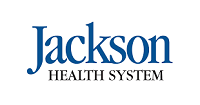 Healthcare is always in a state of flux, and last year’s pandemic added more volatility to what is already a shifting landscape. Trying to keep up with all of the COVID regulatory changes, on top of the regular tax implications of running a business, is an overwhelming task without the help of professional accounting firms.
Healthcare is always in a state of flux, and last year’s pandemic added more volatility to what is already a shifting landscape. Trying to keep up with all of the COVID regulatory changes, on top of the regular tax implications of running a business, is an overwhelming task without the help of professional accounting firms.
“When the pandemic first began, we reached out to our clients to determine how we could help them—a number had partially or fully closed down and they were concerned about how to make ends meet,” said Jeff Kramer, CPA, CGMA, managing director, BDO USA, LLP. “We had to digest all of the new IRS and federal government regulations, educate our clients, and help them apply for relief.”
 “A lot of businesses also reached out to their accounting firms to help see them through,” added Angelo Pirozzi, partner, Healthcare Center for Excellence & Innovation, BDO USA, LLP. “There was so much uncertainty and so many gray areas within the new regulations; clients had—and still have—a lot of questions. And regulations are still being clarified today, which is why businesses need tax and advisory guidance.”
“A lot of businesses also reached out to their accounting firms to help see them through,” added Angelo Pirozzi, partner, Healthcare Center for Excellence & Innovation, BDO USA, LLP. “There was so much uncertainty and so many gray areas within the new regulations; clients had—and still have—a lot of questions. And regulations are still being clarified today, which is why businesses need tax and advisory guidance.”Kramer works with individual physicians, small and large medical practices, accountable care organizations (ACOs), Medicare Advantage plans and home healthcare companies to help them find their way through the recent regulatory changes and resulting tax implications.
“With the pandemic, a lot of companies took part in the Paycheck Protection Program (PPP), which allowed businesses, including medical practices, to receive loans or advances from the government to meet operating expenses,” he explained. “We spent a lot of last year helping them apply for these loans and then helping them get forgiven by the government.”
Some of these same businesses received Employee Retention Credits (ERCs), which are provided by the government if a business had a 20 percent or more reduction in revenue compared to 2019. The tax credits could be used to offset increased operating expenses caused by the pandemic.
While hospitals were not able to take advantage of the PPP because most exceed the 500-employee limit, most, if not all, participated in the Provider Relief Fund (PRF).
“The Department of Health & Human Services (HHS) came to the rescue of hospitals early on in the pandemic; in March and April, billions of dollars were given to hospitals across the country, based on their size and number of claims, to spend on COVID-caused revenue loss as well as COVID-caused expenses,” explained Pirozzi.
“Hospitals originally had until June 30 of this year, which has now been moved to December 31 and for some, into 2022, to provide an accounting to HHS of how they spent the money,” he added. “But the challenge is in the details—documenting revenue loss and expenses incurred because of COVID.”
For example, when hospitals were ordered to shut down elective surgeries in mid-March for anything other than emergencies, they experienced huge revenue losses. “This is in addition to having to order protective equipment and respiratory equipment, and having to bring on more nurses, often through agencies, which is much more expensive,” explained Pirozzi.
Although many hospitals are tax-exempt, for-profit hospitals may need assistance in determining the 2020, 2021 and even 2022 tax aspects of utilizing these funds.
Hospitals also received Employee Retention Credits, which have been extended through December 31 of this year. “Most hospitals didn’t furlough or lay people off, and continued to pay their employees full wages even though they were working less time,” said Pirozzi. “A number of hospitals continued to pay surgeons their full wages even though they couldn’t operate because elective surgeries were shut down due to government order.”
In 2020, the credit was 50 percent per employee and was limited to the first $10,000 of wages paid for a maximum 2020 ERC credit of $5,000 per employee. The ERC was substantially increased to $7,000 per employee, per quarter, in 2021 for a total potential credit of $28,000 per employee.
“To the government’s credit, their reaction was quick and the capital distribution was swift and helped a tremendous amount of companies reposition themselves,” said Pirozzi. “A lot of companies have come out on the other side of the tunnel potentially stronger than ever.”
Many medical practices, laboratories and hospitals have introduced new service lines, or embraced growing trends such as telehealth. “It’s a credit to entrepreneurship and the brilliance of these business owners and providers that they have been able to reinvent themselves to deal with the ‘new normal,’” said Pirozzi.
“We’ve also seen a lot of movement with smaller medical practices merging into larger practices, with some becoming owned by private equity firms,” said Kramer of other emerging trends. “The level of sophistication has grown, and organizations have expanded into providing different kinds of care and service at a better level than before as a result of increased expertise, IT infrastructure and better management.”
As healthcare businesses adjust to the ‘new normal,’ there’s no doubt that there will be more changes to come; having a knowledgeable accounting firm can help guide clients through the process.


























